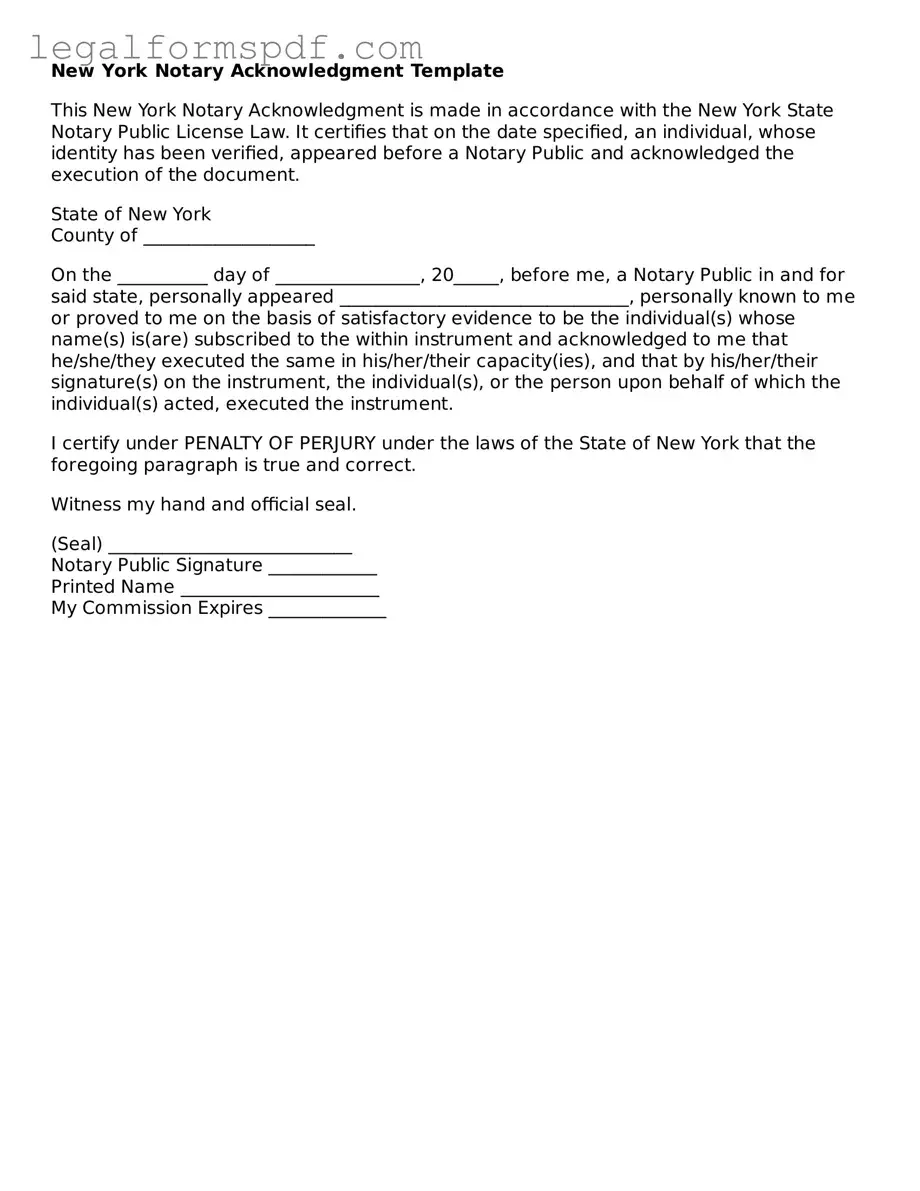What is a Notary Acknowledgement form in New York?
A Notary Acknowledgement form in New York is a document used by a notary public to confirm the identity of the signer and acknowledge that they have willingly signed a document. It's an official statement attesting to the authenticity of the signature, typically required for documents to be used legally or officially within the state.
Who needs to use a Notary Acknowledgement form?
Anyone who is signing a document that requires notarization in New York may need to use a Notary Acknowledgement form. This is often necessary for legal documents, real estate transactions, power of attorney documents, and any other official documents that require a verified signature.
Where can I find a Notary Acknowledgement form in New York?
You can find a Notary Acknowledgement form at most office supply stores, legal stationery stores, or online through legal services websites. Additionally, many notaries public will have these forms readily available for you during the notarization process.
Can I fill out a Notary Acknowledgement form myself?
While you can fill out parts of the Notary Acknowledgement form, such as your personal details and the specifics of the document being notarized, the official acknowledgment section must be completed by a licensed notary public in New York after verifying your identity and witnessing your signature.
Is there a cost associated with getting a Notary Acknowledgement in New York?
Yes, there is typically a fee for notarization services in New York, which includes the use of a Notary Acknowledgement form. The fee can vary depending on the notary's location and the type of document being notarized. It's advisable to check with the notary beforehand to understand any costs involved.
What kind of identification do I need to provide to the notary for a Notary Acknowledgement?
When requesting a notary acknowledgement in New York, you'll need to provide valid, government-issued photo ID to verify your identity. This could include a driver's license, passport, or state identification card. The notary will review your identification to ensure it is valid and corresponds with the signature on the document.
How long does the process of getting a Notary Acknowledgement take?
The process of getting a Notary Acknowledgement can be relatively quick, often taking just a few minutes once you are in front of the notary. However, the total time can vary depending on the notary's availability and any prior appointments.
Is a Notary Acknowledgement form in New York valid in other states?
Yes, a Notary Acknowledgement form executed in New York is generally recognized and considered valid in other states due to the Full Faith and Credit Clause of the U.S. Constitution. However, it's important to check the specific requirements of the document or entity requesting the notarization, as some may have specific rules or requirements regarding out-of-state notarizations.
